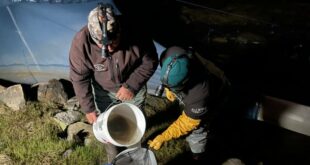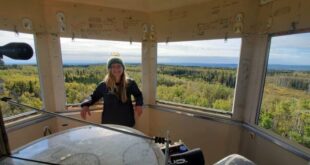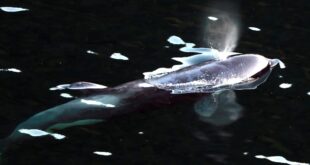‘This is sort of a very rare event for it to be occurring this early in the season.’

The Prairies Climate Change Project is a joint initiative between CBC Edmonton and CBC Saskatchewan that focuses on weather and our changing climate. Meteorologist Christy Climenhaga brings her expert voice to the conversation to help explain weather phenomena and climate change and how they impact everyday life.
After the cooler than normal start to spring in much of Alberta, the heat has been turned up to kick off May.
Temperatures climbed into the mid to high 20s across the province on Monday, with both Edmonton and Calgary setting new temperature records.
A ridge in the upper levels of the atmosphere has pushed this warmer than normal weather into Alberta and parts of the B.C. interior this week, and looks to last at least until the weekend.
“A big omega block has formed over Western Canada,” said Terri Lang, meteorologist with Environment and Climate Change Canada.
Named for the jet stream’s likeness to the Greek letter omega (Ω), these blocking ridges lock weather in place, leading to extended periods of hot and dry conditions.
“The Prairies are pretty much blocked from getting precipitation under this pattern,” Lang said
“Underneath a high pressure system like this, the air sinks. And when air is forced to sink, it warms. So we’re getting extra warmth.”
According to Lang, Alberta shouldn’t expect any precipitation moving in until the weekend, when the ridge may start to break down.
“When these upper ridges break down we usually get … some wind, some precipitation and a lot cooler air. But not all of the models are agreeing on the ridge breakdown [timing] quite yet.”
Although omega blocks and early spring heat are not unprecedented, Lang said this extent of record-breaking heat does stand out.
“This is sort of a very rare event for it to be occurring this early in the season, and just a little bit of that weather whiplash too.”
Spring heat and wildfire
In Alberta, spring wildfires are particularly dangerous, can spread rapidly, and are often human caused.
“May is the busiest for Alberta,” said Mike Flannigan in an interview with Edmonton AM on Monday.
Flannigan is the research chair for Predictive Services, Emergency Management and Fire Science at Thompson Rivers University.

“We call it the spring window after the snow goes and before vegetation greens up,” he said.
At this time of the year, there is an abundance of dead organic material that burns quickly and is one of the primary ingredients for fire to occur, Flannigan said.
“We’re off to a roaring start and you look at the weather forecast and it’s going to be warm to hot for most of Alberta for the coming week,” he said.
Hot, dry and windy weather are prime ingredients for dangerous wildfires and Flannigan said that this week will be challenging.
“Last week was busy, this week could be busier. And much of Alberta is abnormally dry or even in drought stage, so that kind of sets the stage.”
Wildfires and climate change
Though spring heat like we are seeing is rare, it may become more common as our climate continues to change.
Flannigan said that wildfire seasons in Canada are lengthening and becoming more severe.
“We’re almost moving to fire years instead of fire seasons,” he said. “That’s the result because we’re getting warmer.”
According to Flannigan, with climate change, we’re also expecting more lightning, which means more lightning-caused fires in the summer. The vegetation is getting drier too.
“The warmer it is, the more efficient the atmosphere is at sucking the moisture out of the vegetation,” he said.
Flannigan said that means that fires start and spread easier.
“[That] leads to higher intensity fires that are difficult to impossible to extinguish.”
Our planet is changing. So is our journalism. This story is part of a CBC News initiative entitled “Our Changing Planet” to show and explain the effects of climate change. Keep up with the latest news on our Climate and Environment page.

CBC Meteorologist
Christy Climenhaga is a meteorologist and CBC Edmonton’s climate reporter, covering the impacts of climate change for the Prairies. She has worked as a CBC on-air meteorologist for more than 10 years, in the North and Saskatchewan. Have a climate question? Reach out at christy.climenhaga@cbc.ca.
*****
Credit belongs to : www.cbc.ca
 Atin Ito First Filipino Community Newspaper in Ontario
Atin Ito First Filipino Community Newspaper in Ontario






